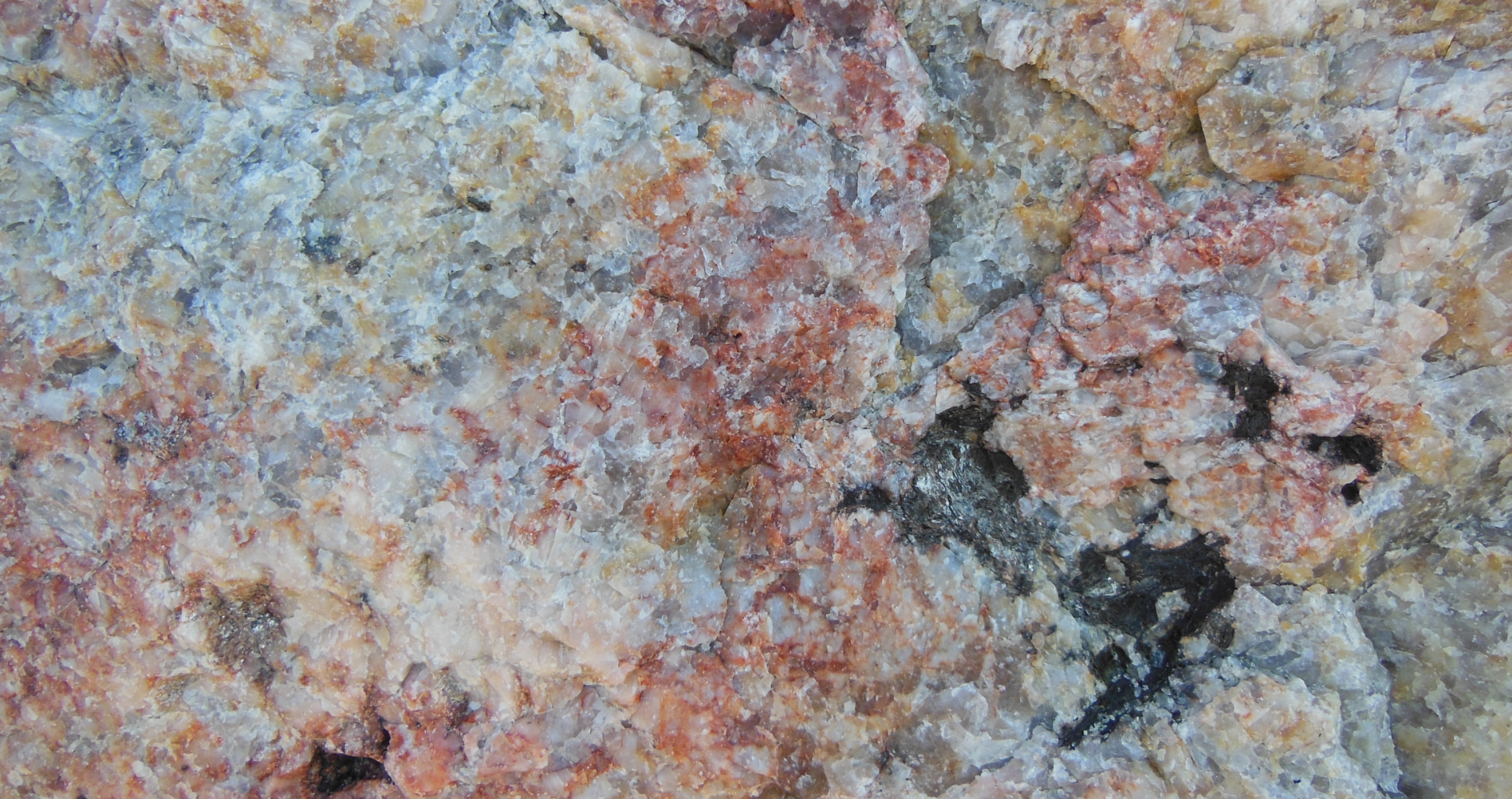What are rocks made of?
An article for science dummies on the nature of rocks, the literal foundation of everything we know.
Text: Kathelijne Bonne.
What is a rock? Is it just a rock? No. Rocks have more to tell than most people will ever be able to imagine. But let's stay focussed. What do we see when we look at a hand specimen of a rock? At first, not much. It looks rather dull, uninteresting, of undefinable colour and form. Let's call it greyish, shapeless, and rather heavy, for now. Then we may notice some texture. The specimen may show little grains or flecks. Or we can see stripes or some kind of waves. On a polished specimen we see much more. Sometimes, little white skeletons of creatures long gone can be seen, forever frozen in the rock.
Did we say grey? Many rocks are grey, but they can also be speckled with black, white, pink, golden, silvery, greenish, burgundy, brown and blue colours. We are getting somewhere. So we now understand that rocks and stones consist of smaller components, in different colours. These components are distributed in the rock in a certain manner, visible as waves, lines, dots, stripes, etc.
Check out the rocks below! Think about what you see and how you would describe them, then scroll down to see what they are called.
So what are rocks? They are the solid material beneath our feet, of the entire Earth, and also of many other planets and rocky objects. Rocks are made up of a mixture of minerals. Minerals, when well-developed, have geometric crystal forms. They are the building blocks of all rocks. There are more than 5000 different minerals in the world and beyond, but most rocks consist of only a few of them, in varying amounts. Salt is a good example of a mineral we handle every day. It originally precipitated from lakes and seas that became dry. Well known minerals include quartz, e.g. amethyst, diamond, gypsum (desert rose), corundum (ruby and sapphire), lazurite (lapis lazuli). We associate these minerals with gems, but they are rather rare. Some of the most common minerals are not part of our daily vocabulary, such as feldspar, pyroxene, amphibole, olivine, or calcite. They form the bulk of the Earth. And they are probably present in parts of your house, in kitchen worktops, window tops, bathrooms, doorsteps, terraces, etc.
You now realised, that with all these minerals, there is an incredible diversity in rock types. Sandstones, with characteristic warm colours are fossilized dunes, beaches or river beds. They consist mainly of small quartz grains, that you can see with the naked eye. Limestone is made up of skeletons of creatures of the past. Basalt is solidified lava from volcanoes. It consists of dark minerals, a lot of iron and magnesium, and are known to form very fertile soils. Granite, with big crystals, are very common in many parts of the world. They are cooled-down magma chambers, that never erupted from volcanoes. Luckily!
I am tempted to explain the three great groups of rock types here, but that would take us too far. I will write about it in an upcoming article. Stay tuned!
Rocks in the pictures:
- Left: migmatite, a rock with white and dark crystals that deformed deep in the Earth, and became nearly liquid, under very high pressure and heat. The white crystals got concentrated forming the white, wavy bands.
- Middle: limestone rock with fossils of shells (brachiopods). The rock is called limestone because most hard parts of organisms are made up of lime (calcium carbonate).
- Right: sandstone. Petrified fossil dunes. The layers with different colours show different compositions of the sand as it blew over the desert.

